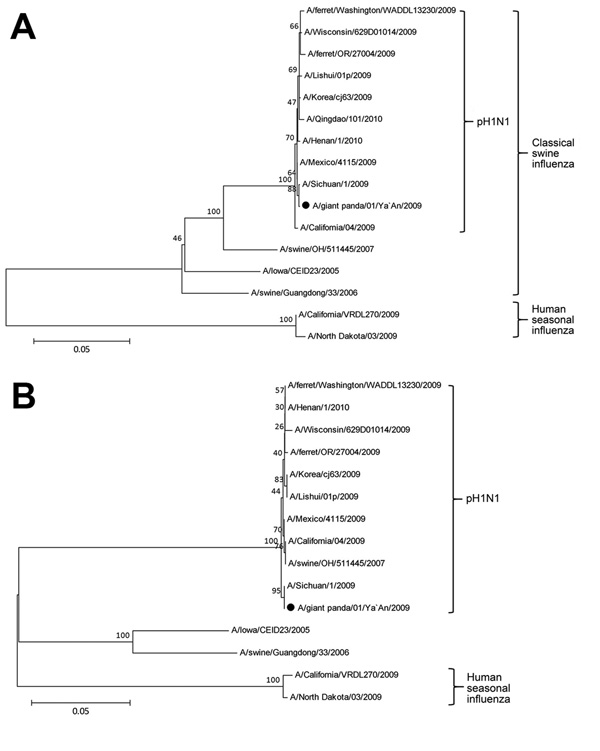Volume 20, Number 3—March 2014
Dispatch
Influenza A(H1N1)pdm09 Virus Infection in Giant Pandas, China
Figure 2

Figure 2. . Phylogenetic trees of influenza A(H1N1)pdm09 virus (pH1N1) isolated from a giant panda in China compared with previously characterized pandemic influenza A(H1N1) viruses. A) Hemagglutinin gene nucleotide sequences; B) neuraminidase gene nucleotide sequences. Neighbor-joining trees were created by using MegAlign software version 5.0 (www.megasoftware.net). Bootstrapping with 1,000 replicates was performed to determine the percentage reliability for each internal node. Horizontal branch lengths are proportional to genetic distances. Black dot indicates the isolate from this study. Scale bars indicate nucleotide substitutions per site.
1These authors contributed equally to this article.
Page created: February 19, 2014
Page updated: February 19, 2014
Page reviewed: February 19, 2014
The conclusions, findings, and opinions expressed by authors contributing to this journal do not necessarily reflect the official position of the U.S. Department of Health and Human Services, the Public Health Service, the Centers for Disease Control and Prevention, or the authors' affiliated institutions. Use of trade names is for identification only and does not imply endorsement by any of the groups named above.